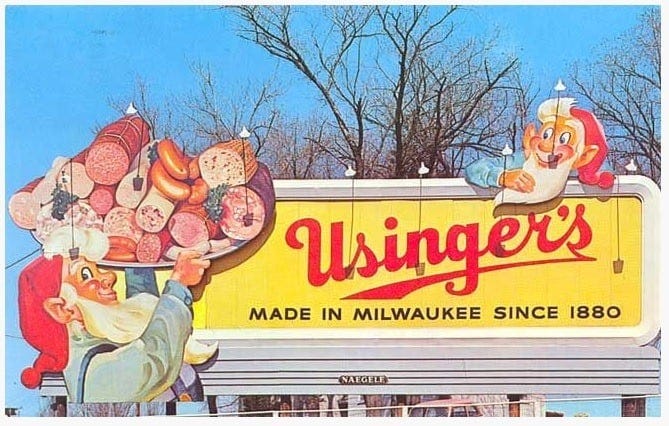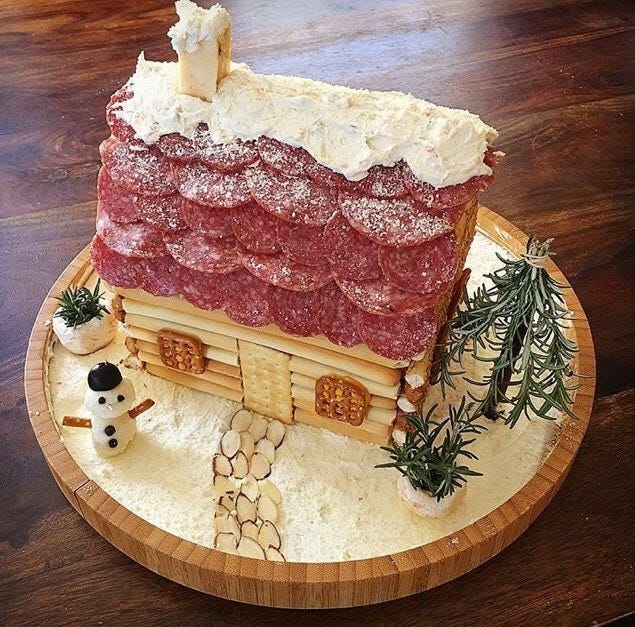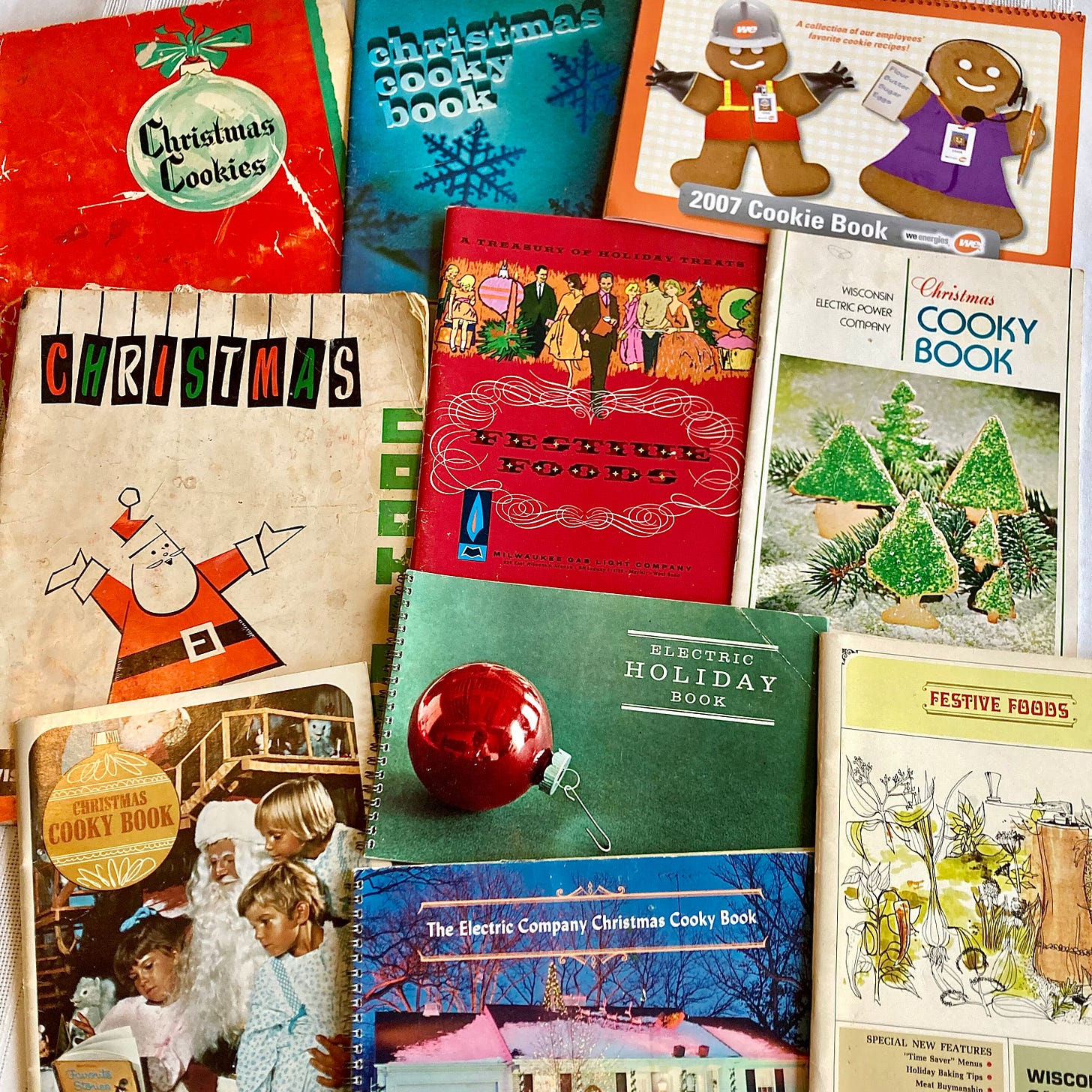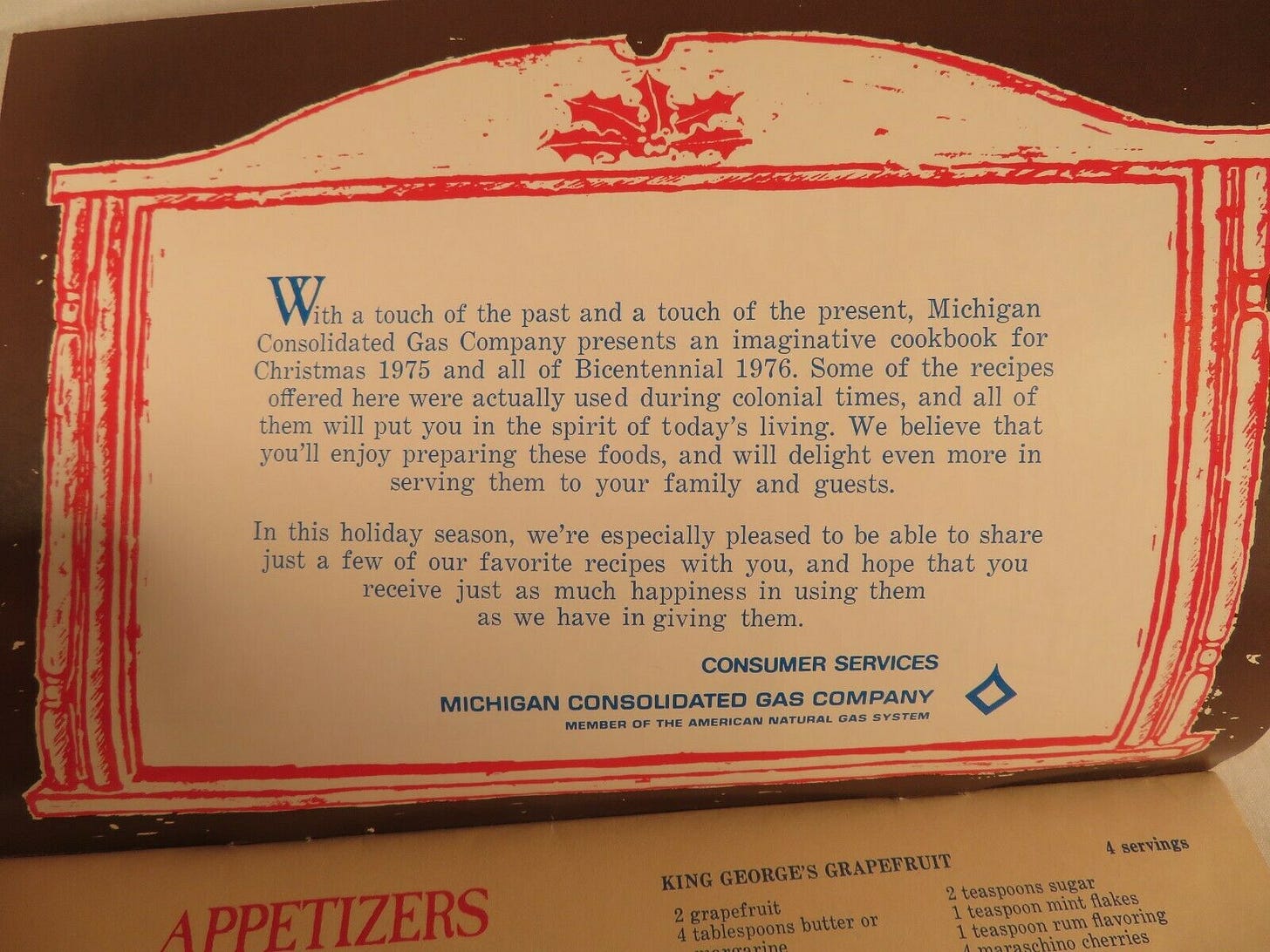Maybe the Electric Company Gave You That Cookie Recipe
Are you going to use it for Santa? Or does he get liverwurst?
This newsletter has a bonkers high open rate, which is very exciting to me and my homegirls (freelancers). If you haven’t become a paid subscriber yet, please do!
Food Question of the Week:
Everyone please tell me in the comments: do you/did you/would you leave milk and cookies out for Santa, or something else?

In Milwaukee, Even a Vegetarian Has a Favorite Sausage Shop
Despite going vegetarian 19 years ago, I still visit the iconic Usinger’s sausage shop in Milwaukee every Christmas. The shop is located on historic Old World 3rd Street, the former heart of Milwaukee’s large German community and still the best place to find German restaurants, brat houses, and beer halls.
Usinger’s has been grinding out sausage since 1880; pork connoisseurs across the country can now order sausage online or snag it at well-stocked specialty markets, but Milwaukeeans have the distinct pleasure of visiting in person.
In the mid-’80s, my dad took my sister and me to the shop to buy sausage and to let us indulge in free bologna samples.. My favorite part of the trip was seeing the elves that have decorated the storefront’s windows since the 1950s. Display themes change based on the season or recent headlines. During Christmastime, the elves are dressed like Santa’s helpers, wrapping Christmas presents and riding sleds.
As a kid, my favorite Usinger’s sausages were summer sausage, a smoked and cured pork or beef sausage heavy on black pepper and garlic; and braunschweiger. Named after the German town of Braunschweig, braunschweiger is a spreadable smoked pork liver sausage that’s sometimes referred to as liverwurst. Though I loved it as a kid, it tends to be most popular among grandparents. I ate my summer sausage on white and my braunschweiger on rye. Both were best with mayonnaise, though I sometimes used spicy brown mustard on the braunschweiger.
My dad often bought kielbasa sausage, which he baked with potatoes and caraway seed-studded sauerkraut for a hearty Sunday supper. Today, I make a vegan version, which surely doesn’t taste the same; but I haven’t had meat in so long that I can’t tell the difference.
In a moment of weakness, about a month after going vegetarian in 2002, I snuck a Usinger’s summer sausage sandwich from my mother’s refrigerator. I haven’t eaten meat since that day but if I were to ever abandon vegetarianism (which is highly unlikely), my first meal would be a Usinger’s summer sausage sandwich on white. Or maybe liverwurst on rye. Or maybe both.
Even though I won’t buy anything, I still visit the shop every Christmas to look around and enjoy the smell, which is odd, considering I’m an ethical vegetarian. My dad died when I was eight years old so I don’t have a lot of memories of him. He passed three weeks before Christmas; being inside Usinger’s makes me think of him. Visiting the elves has become an irreplaceable part of my annual Christmas tradition, and now I take my niece and nephew to see them. 🌭
When Utility Companies Lit Up the Holidays With Cookbooks
By Sheila Julson
Whether it’s boozy rum balls, classic sugar cookies, or pecan fingers, chances are your favorite holiday cookie recipe once (maybe even originally) appeared in a cookbook issued by a local utility company.
The advent of electric-powered appliances at the turn of the last century gave homemakers a reprieve from cumbersome ice boxes and scorching wood-burning ovens. In an attempt to reach more homes during the early 1900s, regional electric companies boosted efforts to promote new time-saving (and safer) inventions to the modern housewife. Those efforts included hiring home economists to educate the public with classes that promoted electric-powered appliances, and compiling cookbooks. An early example is the New York Edison Company’s “Recipes for Cooking by Electricity,” published in 1911.
In 1926, Hawaiian Electric Company started its Home Services Department to demonstrate the uses and benefits of electrical appliances to Hawaiian residents. Companies such as Utah Power & Light had auditoriums where home economists would give cooking demonstrations. By the mid-century, electric and gas companies nationwide hosted festive demonstrations around the holidays that included free recipe booklets for customers.
As demand for these annual holiday cookbooks grew, home services departments at local utilities often planned year-round for their big pre-Christmas book distribution. Recipes were primarily for decorative cookies, fruitcake, or strudel, along with some savory dinner or party snack recipes. Creations were tested multiple times in the utility’s home economics kitchens. Finished products were often photographed in-house.
Before utility mergers of the 1980s and ‘90s, some regions had separate gas and electric companies, with each issuing dueling cookbooks that touted the advantages of cooking with electric power over gas, or vice versa. Not to be outdone by electricity, books such as “The Gas Company’s Christmas Recipes 1952,” issued by what’s now Central Electric and Gas Company in Lincoln, Nebraska, promoted gas appliances by instructing readers to “... bake in a preheated BLUE FLAME oven” (blue flame being the indication of safe and efficient gas combustion).
The tradition of utility companies distributing free holiday recipes books continued until those late-century mergers. Some utilities have revived annual holiday cookbook traditions. Wisconsin’s We Energies (formerly Wisconsin Electric Power Company) distributes approximately 200,000 free copies of its Cookie Book every year since bringing the book back in 2006. 📚
Sources:
Recipes for Cooking by Electricity: History of Medicine and Public Health, Hawaiian Electric, Deseret News, Milwaukee Journal Sentinel, Christmas Recipes 1952, Wisconsin’s We Energies Cookie Book
More Food Reading:
That does it, I’m doing an episode on Mormon food habits.
Changing mores regarding cookbook plagiarism - it is made complicated by the fact the recipes can’t be copyrighted. (And I just want to brag about two Smart Mouth guests being interviewed and photographed for this piece: Andrea Nguyen and Jenné Claiborne. My guests are movers and shakers!
Oh man I love this butter mochi recipe, as well as the discussion of “bad for you” and Hawaiian history.
If you enjoy the newsletter today, please forward it to someone who’d enjoy it, and tap the heart icon above or below, which will help me reach more readers. I appreciate your help, y’all!
This newsletter is edited by Katherine Spiers, host of the podcast Smart Mouth.
A TableCakes Production.
Want to contribute? Here are the submission guidelines.








Yes, definitely, when we believed, my brother and I left out cookies and milk for Santa and raw vegetables for Rudolph. In the morning, the plates were never empty; everything was sort of half-eaten for a better suggestion of visit evidence.
Congrats on the "bonkers high open rate" for this newsletter! As for Santa's milk and cookies question: We did do that for a couple of years but then I think my mom was worried about my dad's cholesterol so it stopped haha.